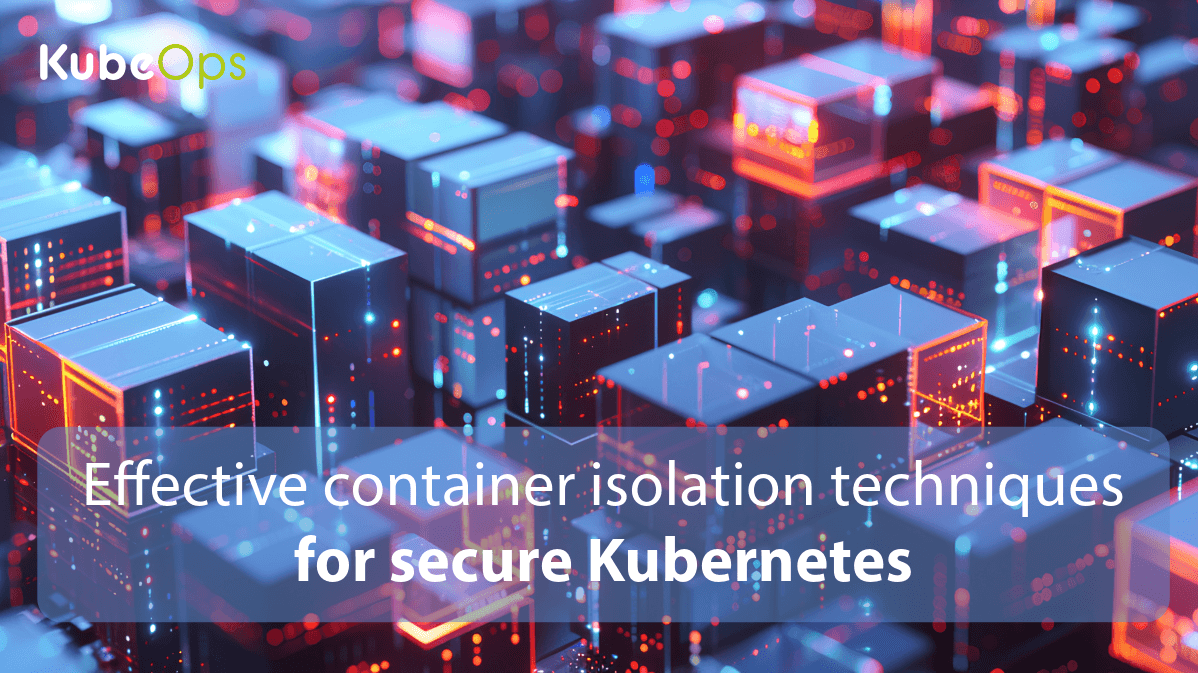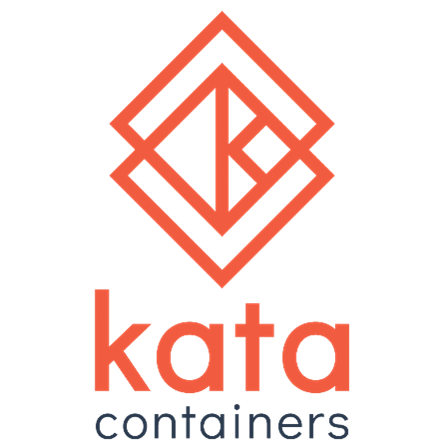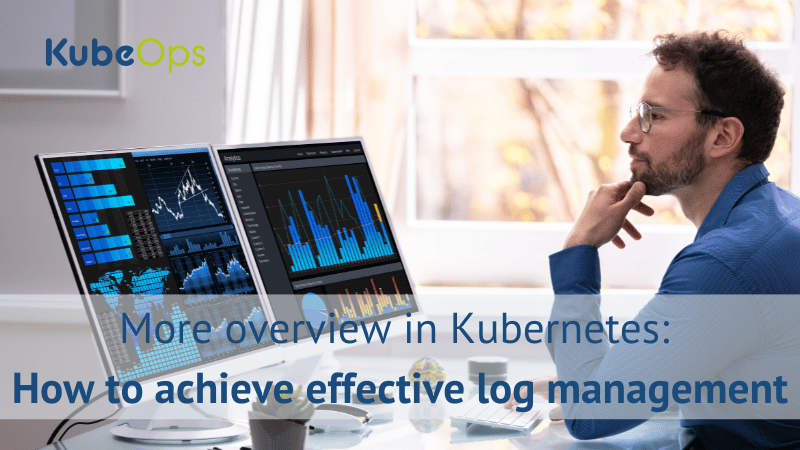Blogs
Effective container isolation techniques for secure Kubernetes

Introduction
In the realm of Kubernetes, ensuring the isolation of containers is crucial for maintaining the security and integrity of applications. Effective container isolation techniques help prevent security breaches from spreading among containers, which is vital in a multi-tenant environment where numerous containers can co-exist on the same physical or virtual machines. This blog post explores various container isolation techniques including gVisor, Kata Containers, and native Kubernetes features.
Understanding Container Isolation
Container isolation refers to the methods used to limit the interaction and impact of a containerized application on others within the same host. Proper isolation prevents malicious or malfunctioning containers from affecting others, thereby enhancing the overall security of the system.
Techniques for Container Isolation
Container isolation in Kubernetes is crucial for maintaining operational security and system stability. Here, we delve deeper into the specific technologies and strategies available to enhance container isolation:
1. gVisor

Detailed Implementation: To integrate gVisor with Kubernetes, administrators need to install the gVisor add-on and configure their Kubernetes environment to use runsc, the gVisor runtime, for selected pods. This involves setting up a RuntimeClass in Kubernetes that points to the gVisor runtime.
Security Enhancements: gVisor intercepts and filters system calls made by the container, providing a much smaller attack surface compared to a regular container runtime. This user-space kernel helps mitigate the risk of kernel exploits that could lead to broader security breaches.
Example Implementation:
yaml
apiVersion: node.k8s.io/v1
kind: RuntimeClass
metadata:
name: gvisor
handler: runsc
2. Kata Containers

Detailed Implementation: Similar to gVisor, setting up Kata Containers involves configuring a RuntimeClass that specifies Kata as the runtime for pods. This configuration allows each container to run within its own lightweight virtual machine, fully isolated at the hardware level.
Security Enhancements: Kata Containers provides strong isolation by leveraging hardware virtualization technology, which separates container execution from the host kernel entirely. This isolation helps protect against both intra- and cross-container breaches.
Example Implementation:
yaml
apiVersion: node.k8s.io/v1
kind: RuntimeClass
metadata:
name: kata
handler: kata-runtime
3. Native Kubernetes Features
Enhanced Namespace Isolation: Use Kubernetes namespaces to create virtual clusters within a single physical cluster. This logical separation helps enforce security policies and limits the potential impact of a breach within a specific namespace.
Robust Network Policies: Define granular network policies that strictly control pod-to-pod communications within the cluster. These policies can restrict network traffic based on namespace, pod labels, or even specific port numbers, enhancing network security at the microservice level.
Security Contexts: Define security contexts for pods to control privileges such as preventing privilege escalation, enforcing the use of non-root containers, and managing access permissions to resources like volumes.
Example Implementation of a Network Policy:
yaml
apiVersion: networking.k8s.io/v1
kind: NetworkPolicy
metadata:
name: default-deny-all
namespace: restricted
spec:
podSelector: {}
policyTypes:
- Ingress
- Egress
Challenges in Implementing Isolation Techniques
- Performance Overhead: Solutions like gVisor and Kata Containers might introduce latency or consume more resources than standard container runtimes due to their additional isolation layers.
- Operational Complexity: Managing different runtime environments and security configurations across a large-scale Kubernetes deployment can complicate cluster operations and maintenance.
- Compatibility and Integration Issues: Some applications, particularly those that require specific kernel capabilities, may not function correctly or efficiently in heavily isolated environments like those provided by gVisor or Kata Containers.
Enhanced container isolation is pivotal for securing Kubernetes environments against both external and internal threats. By combining advanced isolation technologies like gVisor and Kata Containers with Kubernetes' native security features, organizations can achieve a robust security posture that effectively mitigates risks associated with containerized deployments.
Challenges and Considerations in Container Isolation
While container isolation technologies like gVisor and Kata Containers significantly enhance security within Kubernetes environments, implementing these solutions comes with a set of challenges and considerations that organizations must navigate:
1. Performance Impact
- Resource Overhead: Technologies like gVisor and Kata Containers often require more resources than traditional container runtimes. This can include higher CPU usage, increased memory footprint, and potential slowdowns due to the additional layers of abstraction and security.
- Latency Issues: The additional processing required to manage isolation can introduce latency. This is particularly critical for high-throughput, low-latency applications, where even minor delays can impact the overall performance.
2. Operational Complexity
- Deployment and Management: Integrating advanced isolation technologies involves changes to the standard Kubernetes setup, which can complicate deployment and ongoing management. For instance, configuring different runtime classes for gVisor or Kata Containers requires careful planning and testing.
- Monitoring and Debugging: Monitoring tools and debugging practices that work well with standard containers might not be directly applicable to containers running within virtualized environments or using different runtimes. This may require additional tools or adaptations to existing monitoring setups.
3. Compatibility and Integration
- Application Compatibility: Some applications, especially those that rely on specific kernel features or have high-performance requirements, might not perform optimally or at all within virtualized or highly restricted environments provided by gVisor or Kata Containers.
- Ecosystem Integration: There can be challenges in ensuring that all components of the Kubernetes ecosystem, such as networking plugins or storage solutions, work seamlessly with these isolation technologies.
4. Security Configuration and Compliance
- Security Misconfigurations: Incorrectly configuring isolation levels or misunderstanding the security guarantees of each technology can lead to vulnerabilities. For instance, assuming all security concerns are handled by Kata Containers without properly configuring the VM or the host system can expose the environment to risks.
- Compliance Verification: Ensuring that container isolation configurations comply with industry regulations and standards can be complex, especially when using new or less common technologies. Regular audits and compliance checks are necessary to maintain security standards.
5. Learning Curve and Skill Requirements
- Technical Expertise: Successfully implementing and managing advanced container isolation technologies requires a high level of technical expertise in both Kubernetes and the specific technologies like gVisor or Kata Containers. This may involve significant training or hiring specialized personnel.
- Community and Support: Depending on the maturity and popularity of the technology, there may be limited community support or fewer experts available to assist with deployment and troubleshooting.
6. Cost Considerations
Infrastructure Costs: Implementing solutions like Kata Containers, which may involve using additional virtualization resources, can lead to increased infrastructure costs. This includes higher costs for computing resources and potentially more investment in management tools
Conclusion
Effective container isolation is key to securing Kubernetes environments. Technologies like gVisor and Kata Containers offer robust solutions by providing higher degrees of isolation compared to traditional container setups. Additionally, leveraging native Kubernetes features such as namespaces, network policies, and the new Pod Security Admission can further enhance the security posture. By carefully selecting and implementing these technologies, organizations can significantly mitigate the risk of cross-container breaches and ensure a secure, stable, and resilient containerized environment.

